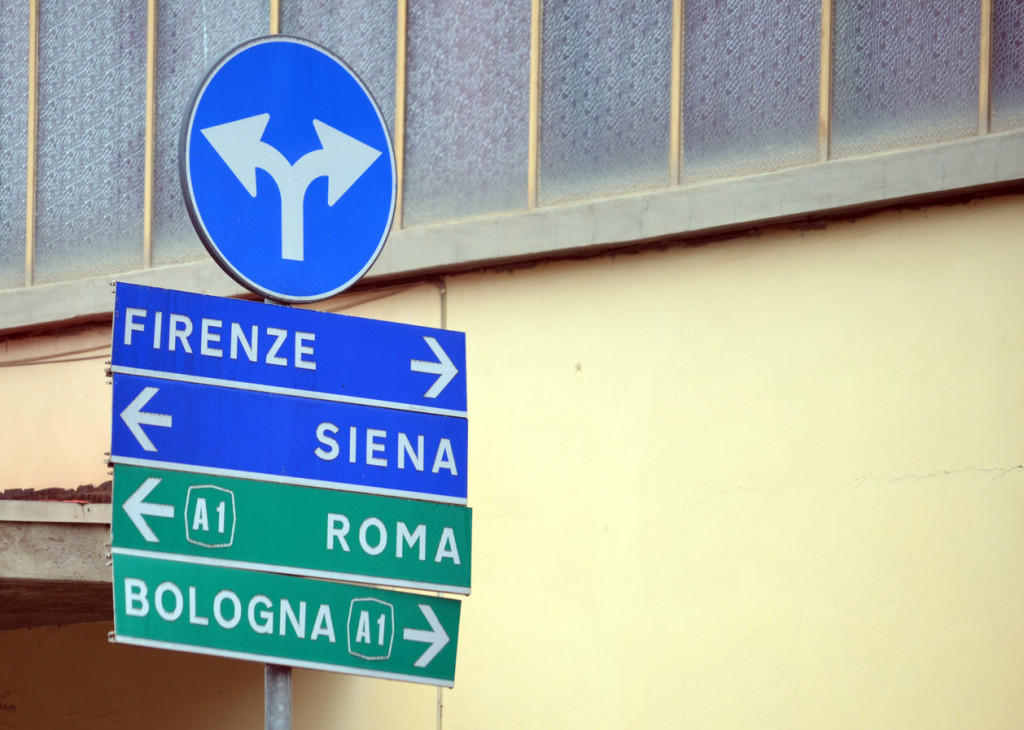
Road signs in Lucca, Italy. Photo © David McSpadden, licensed Creative Commons Attribution.
It is easy to be the victim of miscommunication in Italy, but nowhere is it easier, or are the consequences more severe, than on the road. Signage can be as misleading as the indications from drivers themselves.The first thing you’ll notice about city roads is that there are so many signs pointing to the highway or adjacent towns that it seems you don’t even need a map. In many cases, this is true, except that the green signs pointing the way to the autostrada or the blue ones to state roads do not necessarily suggest the quickest route, but rather one that will eventually lead there. All roads lead to where you are going, sooner or later.
If your Italian is not good enough to understand the response, and you have to rely on the signs, first you need a lesson in the language of arrows. An arrow pointing left for Rome, for example, does not mean turn left for Rome.Italians know this, of course, and so it is common practice to stop a pedestrian to ask for directions. If your Italian is not good enough to understand the response, and you have to rely on the signs, first you need a lesson in the language of arrows. An arrow pointing left for Rome, for example, does not mean turn left for Rome. If the sign is on the right-hand side of the road and the arrow is pointing left—that is, toward the road in front of you—it means go straight ahead. A turn will be signified by a diagonal arrow pointing either up and to the left, or up and to the right. When the arrows disappear, go with the flow. You will have to take a leap of faith between signs and stay on what appears to be the major thoroughfare, even if it makes sharp turns. When there is a legitimate question at an intersection where it joins a large road, there will usually be another sign.Traffic lights can also be confusing, and remember that many drivers consider a red light to be more of a guideline than a law. Also, when approaching a flashing yellow light at a four-way intersection, do not assume that there will be a flashing red in the other direction. More often than not, it, too, will be a flashing yellow.
Another of the famous faux amis is a car flashing its headlights at you when you are signaling to turn into its path. In North America, this usually means, “Go ahead.” In Italy, it means, “Don’t even think about it,” and often will be accompanied by acceleration. A miscommunication could have some unpleasant consequences.
Italians also flash their headlights when there is a speed trap or traffic block ahead. The number of times they flash their lights depends on how high-ranking the authorities are. A triple flash signifies the carabinieri, the law enforcers with the broadest powers—and that rare stripe of official with whom you cannot smile your way out of a speeding ticket.
Finally, stay out of the left lane unless you are very serious about passing, or you will become a legitimate target for tailgaters. Some drivers are in perpetual passing mode, and will signal their intention by keeping their left blinkers on. To qualify for this group, you will need to maintain a speed of at least 150 kph (90 mph).
Excerpted from the Third Edition of Moon Living Abroad in Italy.